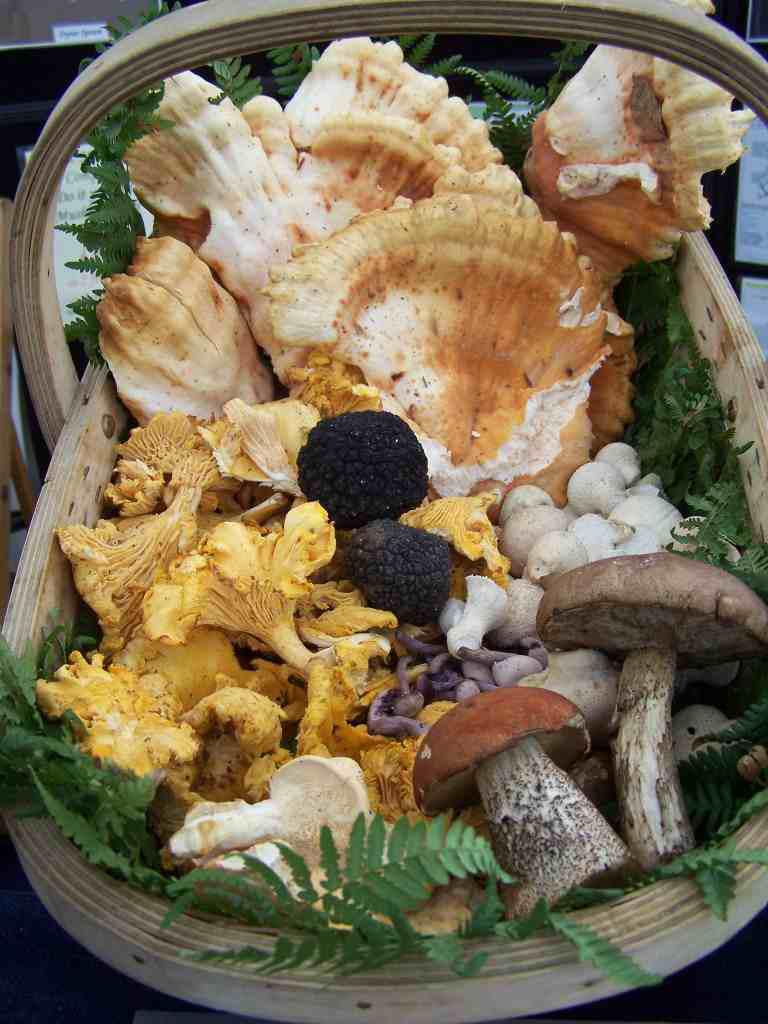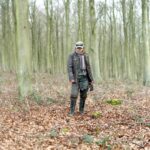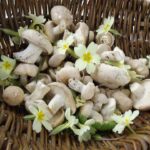General Guidelines from the BMS
Where you can seek the landowner’s or site manager’s permission before you enter private land and explain the purpose of your visit.
- Follow the Country Code.
- Try to minimise damage to vegetation. leaf litter. soil and other features.
- Avoid removing dead wood unless this is necessary to identify a fungus.
- Take a reputable field guide with you and try to identify as many fungi as you can in situ
- Ancient woodlands usually contain a rich variety of different types of fungi and may include some rare species. Particular care should be taken when collecting from these sites.
Collecting for the pot
- Be aware that some fungi are very poisonous and many others may make you unwell. Some people have allergic reactions after eating certain species. Make quite sure you can identify fungi by attending a field course or foray led by an expert before yon start collecting.
- Do not collect species you don’t intend to eat.
- Respect and protect other species. including poisonous ones.
- Do not collect rare or Red List species.
- Only collect from plentiful populations and take no more than you want for your personal consumption. In line with codes in most other European countries. we recommend that you pick no more than 1.5 kg per visit or no more than half of the fruit bodies of any single species present. whichever is the lower amount. Larger quantities taken for profit or other use should be agreed beforehand with the landowner or site manager.
- Do not collect ‘buttons’ (mushrooms that have not expanded). Giving buttons time to expand will allow spores to be discharged and will give you a bigger mushroom to eat.
- On some SSSIs. most nature reserves and other protected areas it is unlikely that culinary collecting is allowed. Always consult the site owner or manager before collecting.
Guidelines for Scientific Collecting
- It is often necessary to collect for identification purposes. The identification and study of fungi is important to further our knowledge of them and to ensure their future survival.
- Collect the minimum amount of material or number of specimens required for a proper description and reliable identification.
- Fungi are enjoyed by many people because of their beauty and intrigue. For this reason you should take care to minimise the visual effect of collecting samples.
- Record accurately the localities and habitat data for rare species.
- Always offer the results of your survey to the landowner or manager and explain the significance of what you have found.
- If you have permission to collect for scientific purposes do not abuse it by also collecting for the pot.
- Supply information to local and national databases and retain ‘voucher specimens’ for deposit in museum collections.
Advice for foray leaders
- Apply for permission in writing, giving the proposed area for the foray. the date. start and finish times and the estimated numbers of people involved.
- Organise the foray to minimise both the numbers of fungi picked. and the risk of picking rare species. Avoid repetitive picking and make sure everyone knows how to collect responsibly to minimise the amount discarded at the end of the day.
- Try to return discarded material to the collection site.
- A rake should only be used when absolutely necessary and then only by the foray leader. Any areas raked should be restored afterwards. with twigs. logs and leaf litter returned.
- Provide a short, simple report for the landowner or manager, listing the fungi found and giving advice on the protection and management of sites where rare species were found.
- Follow the ‘Guidelines for scientific collecting’ where appropriate.
Advice for Landowners & Managers
- If the land is a National Nature Reserve. other nature reserve or protected area. or an SSSI. it will probably be appropriate to limit picking to scientific collecting.
- On SSSIs. picking fungi may require consent in writing from the statutory nature conservation body.
- Foray groups are generally to be welcomed and encouraged. although you may wish to set limits on the number of visits. You can use the ‘Advice for foray leaders’ to ensure good practice on your land.
- If you allow commercial collecting on your land. you may want to issue written permission for any particular year, allowing you to review the situation annually. The permission could specify the following topics. seeking advice from a local expert in fungi if necessary:
- The area where collecting is allowed
- Species which may be collected
- Quantities that may be collected
- Seasons during which collecting can take place
- Collecting methods. such as the use of baskets and boxes rather than sacks or bags
- You may want harvest details to be recorded and handed to you. to allow you to monitor the annual harvest. You could make this a condition of permission renewal.
Scotland
Scottish Wild Mushroom Forum produced its own code for picking for use in Scotland in 2003.oom Forum Scotti Wild Mushroom Forum
Commercial picking
Landowners permission for commercial picking has to be sought or else a it’s illegal. Pat Leonard published an article in 1997 in The Mycologist reviewing the science on commercial picking and its implication for conservation.





Hi there, You’ve done a great job. I will certainly digg it
and personally suggest to my friends. I am confident they’ll be benefited frokm this site. https://lvivforum.Pp.ua/